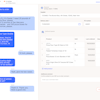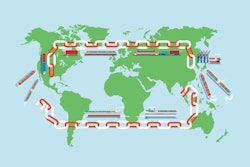
The frozen food industry saw a sizable resurgence during the height of the pandemic as consumers stocked up on available items and purchased in bulk to avoid looming food shortages. According to the American Frozen Food Institute, frozen foods produced $65.1 billion in U.S. retail sales in 2020, which marked a 21% increase when compared to 2019. While these issues may not be resolved overnight, there are steps that food manufacturers can take to help alleviate these issues and get food to consumers in a more timely and cost-effective manner while being as productive on the manufacturing floor as possible.
Frozen foods coming into its own
Advancements in the individual quick frozen (IQF) sector have allowed manufacturers to offer a more diverse range of products to the market. However, arguably more important is consumers’ changing perception of frozen foods.
Previous generations associated frozen with lower quality, lazy and unhealthy meals. Frozen TV dinners of the ‘80s and ‘90s were low-priced and easy to cook, but the industry had trouble shaking the stereotype that customers were better off eating the box than the frozen contents inside. Today, consumers associate frozen with gourmet, luxury prepared meals. Think about all the high-quality frozen meals and dishes you can buy at grocery stores today - there’s been a large shift within the past decade to focus on increased food research and development and upscaling the product and its image through marketing tactics.
The volume of products coming from the frozen food industry impacts business at all levels, such as retail sales, institutional sales, such as airline industries and hotels, and the foodservice category, such as restaurants. The foodservice industry is extremely competitive and items are typically sold in bulk. In the coming years, expect to see an increase in frozen food purchasing by the restaurant industry, especially with the rise of sous vide preparations. This will keep the cost of food down not only for the restaurant, but also for the restaurants’ patrons.
Changes in buying habits
What was once considered to be transitory inflation now seems to be a permanent fixture within the marketplace. With that in mind, families across the globe will increasingly rely on frozen entrees and prepared foods to be at the center of the dinner table. At the same time, frozen food manufacturers can help address the real-world labor constraints within the restaurant industry by offering IQF entrees, sides and desserts that require less cooking/prep time in the restaurant kitchen. In theory, this type of product will deliver more consistent meals to the consumer and help alleviate staffing issues in the kitchens.
Boosting productivity on the floor
Productivity is the No. 1 antidote to inflation. Fortunately, productivity is also part of the flywheel of employee engagement. Just like the football team that wins on Sunday tends to practice harder on Wednesday; the shop floor team that wins more often tends to be more innovative and engaged as a consequence.
You cannot control the cost of food, but as manufacturers, you can control the productivity of your employees. Investing in technology to connect the shop floor together is the name of the game to best combat issues that face the currency market. Manufacturing senior leaders should seek out meaningful productivity improvements tied to employee engagement initiatives. Work with employees to ensure they are being productive enough to meet customer demands and stock expectations.
The manufacturing floor needs investments in technology if they’re expected to meet these lofty goals. Survey the office teams and look at the tools they have to do their jobs. How does that contrast with the tools the manufacturing floor are given to perform their critical tasks?
While we don’t expect consumer demands for frozen food to decrease any time soon, it’s predicted that manufacturers will embrace methods to boost employee productivity and better meet consumer demands. The future of the economy may be uncertain, but technology is always innovating and advancing to help further boost productivity and drive forward a business’ bottom line. Who knows what the new image of frozen food will be in next 10-20 years?


















